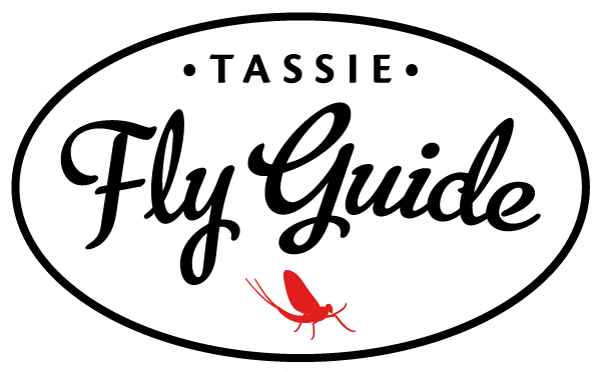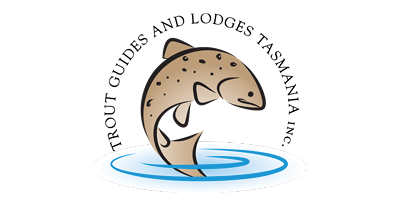“After years of contemplation, I finally drifted southern Tasmania’s River Derwent. The journey was challenging, from catching trout in pristine waters to battling unrelenting rapids. Despite the drift boat copping a flogging, the adventure was unforgettable!”













Ten years have passed since building a drift boat with my mate Paul in his backyard. For three months, we spent every weekend crafting the boat from Huon pine and marine plywood, meticulously following the plans in Roger Fletcher’s Drift Boats and River Dories.
Boat building has a romantic charm that seemingly appeals to all, and drift boats are no exception. My boat, The Black Spinner, was the second boat we’d built together, and this time around, the process was more familiar. Friends and neighbours gathered in the yard as we showered ourselves in sawdust, slowly forming the puzzle pieces.
“The Derwent is a mighty river, punctuated with dams and power stations …”
Drift Boats on the McKenzie River, Oregon, USA.
Legendary American boat-builder Woodie Hindman designed the McKenzie River Drift Boat around 1946, and they quickly became a favourite of American fly fishing guides. I love owning a drift boat; every boat ramp attracts a friendly chat from an eager angler keen to know where it’s from and how it was made — every one of them surprised by my answer, ‘I made it myself.’
In 2017, on a road trip in the USA, I spent a day drifting the McKenzie River in Oregon — the birthplace of wooden drift boats. The river is broad and boulder-laden, with plenty of fast water, spilling into the sea through the city of Eugene, not too dissimilar to the Derwent. I’d daydreamed of re-creating the experience at home ever since. Most Tasmanian rivers are a little more sedate. The Macquarie and South Esk are picturesque, meandering through northern midlands farmland with no rapids to contend with and plenty of trout on offer — but I wanted something more challenging.
THE DERWENT
The Derwent is a mighty river, punctuated with dams and power stations as it stretches 283km from Lake St Clair, emptying into the sea at the foot of Mt Wellington in Hobart. The hydroelectricity it generates powers the TVs and gadgets of every Hobartian’s home — it’s the city’s lifeblood. The lower stretches offer fantastic bream and seasonal sea-runner fishing, only a few minutes’ drive from home — pretty impressive for a capital city!
Most mornings, I begin with a coffee, staring out to the river. ‘The river looks good for fishing today, Honey,’ I often exclaim to my wife. Our five-year-old son has picked up the habit, too, much to her amusement.
With two little people in residence now and a fly fishing magazine to design, fishing trips are a little less frequent, and the boat has waited patiently in the shed, gathering dust. My enthusiasm to drift the Derwent had only grown stronger over time, with constant calls to my mate Sam, obsessing about how desperate I was to try it. Sam’s a professional photographer; when he’s not shooting images, he’s fishing. He spends more time on the water than anyone I know and was up for it — we just needed to find the time.
“My enthusiasm to drift the Derwent had only grown stronger over time …”
Finally, a plan was hatched to fish downstream of Meadowbank Dam, the last obstruction to the natural flow of the Derwent. It took a while for us to find a suitable campsite as a pull-out point around Bushy Park, but after stumbling on hipcamp.com, we found a small private vineyard with river-frontage, where I was joined by Leighton Adem, the third member of our crew. Derek, the landowner, was more than happy to host us for a couple of nights for only a few bob and provide us with some of his delightful pinot to quench our excitement to explore new water.
I had researched the section of the Derwent in the preceding weeks, gleaning information from friends, guides and other anglers. There were a few good stories of nocturnal spin fishermen pulling out the odd trophy above New Norfolk, but the consensus was that the upper Derwent doesn’t hold a lot of fish, so why bother?
ON THE WATER
You gotta love the early morning light in Tassie.
Sam rolled into camp as the sun cracked the horizon, just in time for a fresh, bubbling pot of espresso on the fire. A short time later, we put The Black Spinner on the water at Sam’s mate’s family farm, about 15 river kilometres upstream, and would spend the day drifting downstream back to camp.
Surrounded by a paddock full of curious sheep, we loaded the boat with dry-dropper, streamer and nymphing rigs, covering all potential options. The Yeti was loaded with lunch and ice-cold beer. The early morning air was crisp, with a lingering mist disguising a few small rising fish, leaping sporadically at caddis.
The river was eerily quiet as we pushed off into the inky depths below a towering escarpment. Surreal, as we were only 50-odd kilometres from the city centre. Nothing but the sound of the oars breaking the surface and a few bleating sheep. The river was high, for now. The weather gods smiled upon us with an overcast start to the day and very little wind. We chatted away excitedly, taking in the scenery and cursing the overpopulation of cormorants.
Sam began to send out prospecting casts from the bow as I ushered the boat into the current to find its groove. You don’t really steer a drift boat; you need to encourage it gently. The rower faces forward, to spot fish for the anglers up front.
After a while, I spotted a subtle rise downstream and called, ‘Rising fish at 2 o’clock, 30 feet out.’ Sam had his 10-footer rigged with a pair of streamers, a Gold Humungous and a Shrek at the ready, and had no trouble landing the flies in the zone. Moments later, after a couple of sharp strips, the line ripped tight, and we eventually boated our first Derwent brown, a monster by no means but great to be on the board early and proof that the river holds trout!
“The line ripped tight, and we eventually boated our first Derwent brown …”
Sam Shelley lands the first fish of the day, much to our relief.
The first hour or so rolled on in a comforting, repetitive rhythm. The fish were spread across the river, intermittently rising to midge and the odd dancing caddis. The rowing was easy. Not much effort was required to crisscross the river — targeting the enormous submerged rock shelves to the east and quickly darting back to the willows on the western bank when needed.
The speed of the water only allowed one presentation per fish, so false casts were kept to a minimum. On the dry/dropper, a drag-free drift that worked so successfully on the McKenzie years ago, was undoing a few more fat little brownies. The Gold Humungous stood as a fish magnet, though, just as the whispers of Christopher Bassano’s previous attempts to tame the Derwent residents had informed us in our research.
Downriver, the epically long runs led us to the confluence of the Tyenna River, one of my all-time favourite Tassie trout streams. I’d always wanted to see where it met the Derwent, and it was surprisingly underwhelming, with its inconspicuous junction looking more like a small creek than the Tyenna I know from Westerway and surrounds. On the adjacent bank, below the next shoot, a golden sandbank lay welcoming below a craggy blackwood. I rowed hard and managed to beach the boat before the current got hold of us.
The plan had been to stop and fish structure along the way, between the long featureless glide sections. Surveying the scene on foot for the first time, the river presented us with some pockets of manageable water despite the heavy flow. The slower edges looked likely, with a faster run and tailout further out — ideal for nymphing. The high water hindered progress as we worked our way along the bank. I tried my luck swinging streamers down-and-across closer to shore, but to no avail.
REDUCED FLOW
The rapidly receding water level beached the Drift Boat in no time.
We’d been exploring for a good half hour when Sam called above the river noise, ‘Does that flow look like it’s slowing a little?’
‘Hmmm, maybe’, but turning to look at the sandy bank, there was a visible high waterline marking where the water had been not long ago, and the river level rapidly dropped around 90cm in the next 30 minutes, fully beaching the drift boat.
The river’s structure became more defined and wadable. Moving out into the middle, it wasn’t long before a solid fish was hooked and then promptly busted off, nymphing the main run dropping off into the pool below. I guess 6X wasn’t gonna cut it.
We had only planned to fish for 15 minutes or so, grab a snack and move on. However, the plummeting water level granted access to two-thirds of the run, which only minutes prior was inaccessible. The Hydro Tasmania website later revealed the river is up and down like a yoyo daily, after the peak power period has abated in the homes downriver. We landed a small brown further towards the middle as Sam tried his luck with a soft hackle wet and nymph combo midstream. An hour or so went by with no more action.
“Moving out into the middle, it wasn’t long before a solid fish was hooked …”
Continuing downstream, the river gave way to long stretches of willow-lined broadwater concealing hop fields, the midday sun heating the air. I manoeuvered the boat into a sideways drift to target the bank with the now preferred team of a pair of Humungous — experimenting with fly placement, fishing the seams, bubble lines and the slow water pockets. We soon discovered speed was the key. A fast retrieve into the slower pockets produced feisty browns in hot pursuit. The faster the retrieves, the harder they chased.
With another decent fish safely in the net, I pulled us under the trees, the dappled light filtering through the willows ideal for a photo. While shuffling around to get the best light, the current took hold, spinning the boat 180 degrees and thrusting our numerous rods, hanging out the stern, firmly into the overhanging branches. As we held our breath, an almighty SNAP cracked through the air, the three of us wincing and fearing the worst. To our surprise, not a single rod had broken. The sound was a leader that had snapped off at the tippet!
In my experience, Sea Eagles are always a good omen.
Relieved, we set off again with rods intact and the monkey off our backs with a steadily rising fish count. The anxiety and uncertainty of the trip began to melt away, and the boys decided it was my turn to fish. I eagerly took my place up front. Numerous ‘rising’ platypus got my heart racing as I surveyed the edges and eddies for signs of fish. My concentration was interrupted momentarily by a magnificent sea eagle perched above a deepwater bend in the river. My ‘spider sense’ tingled with the prospect of a good fish holding below. The eagle didn’t budge as we drifted beneath him, taking no notice of a boatload of trout bums.
The hunch paid off as my team of streamers slid into the water a metre off the edge. I paused for a second or two, allowing the flies to sink. Two fast strips and bang, I was on. I could immediately tell it was a good fish as she peeled off the line, descending into the depths, my heart pumping as I attempted to draw her back up without applying too much pressure. She didn’t want a bar of it and spent her second, third and fourth runs edging closer to the bottom. After a gallant battle, we finally slipped the net underneath her, and a grin extended across my face.
INTO THE RAPIDS
The sub-surface boulder garden quickly took hold of the boat.
We were about eight hours in now, and my arms ached. I do love throwing the drift boat into the rapids, it gets the blood pumping. But I had never experienced what the next few kilometres of river had in store for us.
Guiding the boat into the first run, I was confident she’d find the chute that would carry us through a rapidly approaching boulder garden. Alas, self-doubt kicked in at the wrong moment, and I over-corrected, sending us slightly off course. The current smashed us against a massive boulder, shattering the ‘chine log’. For a few moments, we were immovable as the water raged, threatening to upturn the boat. Admittedly, some foul words were uttered as I planted the left oar, spinning the boat back around, correcting our course — bloody hell!
For the next hour, we battled the rapids and pinballed from boulder to boulder as the dramatically reduced river level revealed the teeth of the river rocks below. Until now, there was enough water underneath — a drift boat only draws a couple of inches. Not surprisingly, the rods remained stowed at the back of the Spinner throughout this section as the boat took pounding after pounding, chipping her shiny black paintwork and splintering timber. The long stretches ahead presented repeated obstacles with long, shallow riffles and rocky shelves.
“For the next hour, we battled the rapids and pinballed from boulder to boulder …”
The boat stopped abruptly on the one run, leaving me rowing furiously in mid-air, much to the amusement of the crew, who leapt out to lighten the load. The boys dragged the boat over the drop-off, jumping back in at the last minute as the Spinner slid into deeper water. We repeated this comical process multiple times until, at one point, we ran out of water, resolving to send me on down solo. The boat was light enough to scrape over the tessellated rocky shelves, bumping and grinding its way downstream.
I often joke that my boat falls just behind my children in the hierarchy of life’s importance. All made by my own hand, so to speak. I couldn’t help but wonder how much of a beating she’d taken. Most drift boats in the Pacific Northwest are made from aluminium for good reason. Yankee ‘tinnies’ are built to handle big rivers like the McKenzie, Rogue and Yellowstone. In hindsight, the Derwent was unrelenting and more challenging than I had ever imagined.
Finally, on the home stretch, our camp was in sight, my giant bell ‘glamping’ tent signalling home. The boat was a little broken, but our spirits were high. We dragged her up the bank, cracked open a cold beer and slumped back in our riverside chairs, exhausted and happy.
As published in FlyLife magazine #114, Autumn 2024.
Tight lines! 🎣
Marcus











